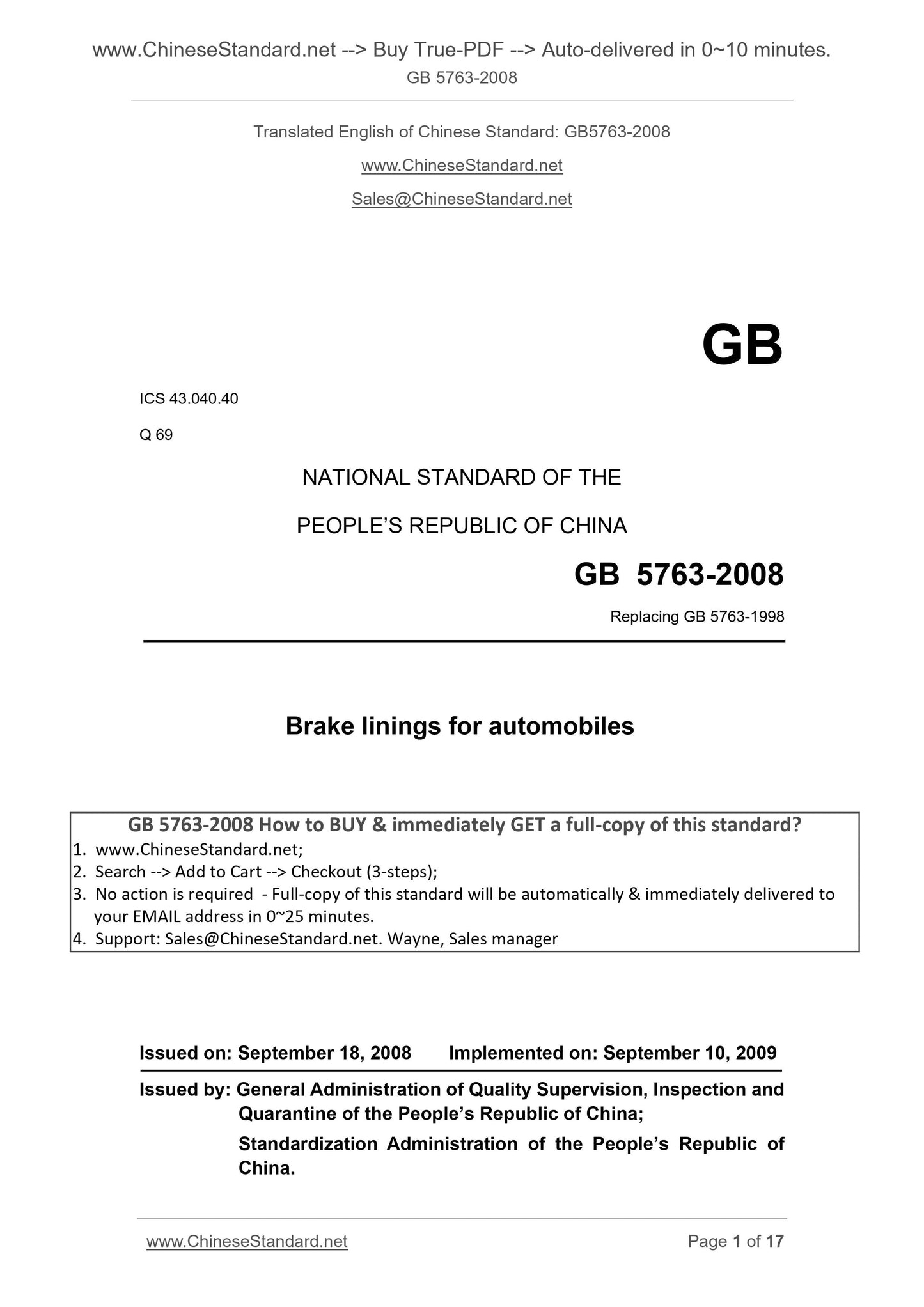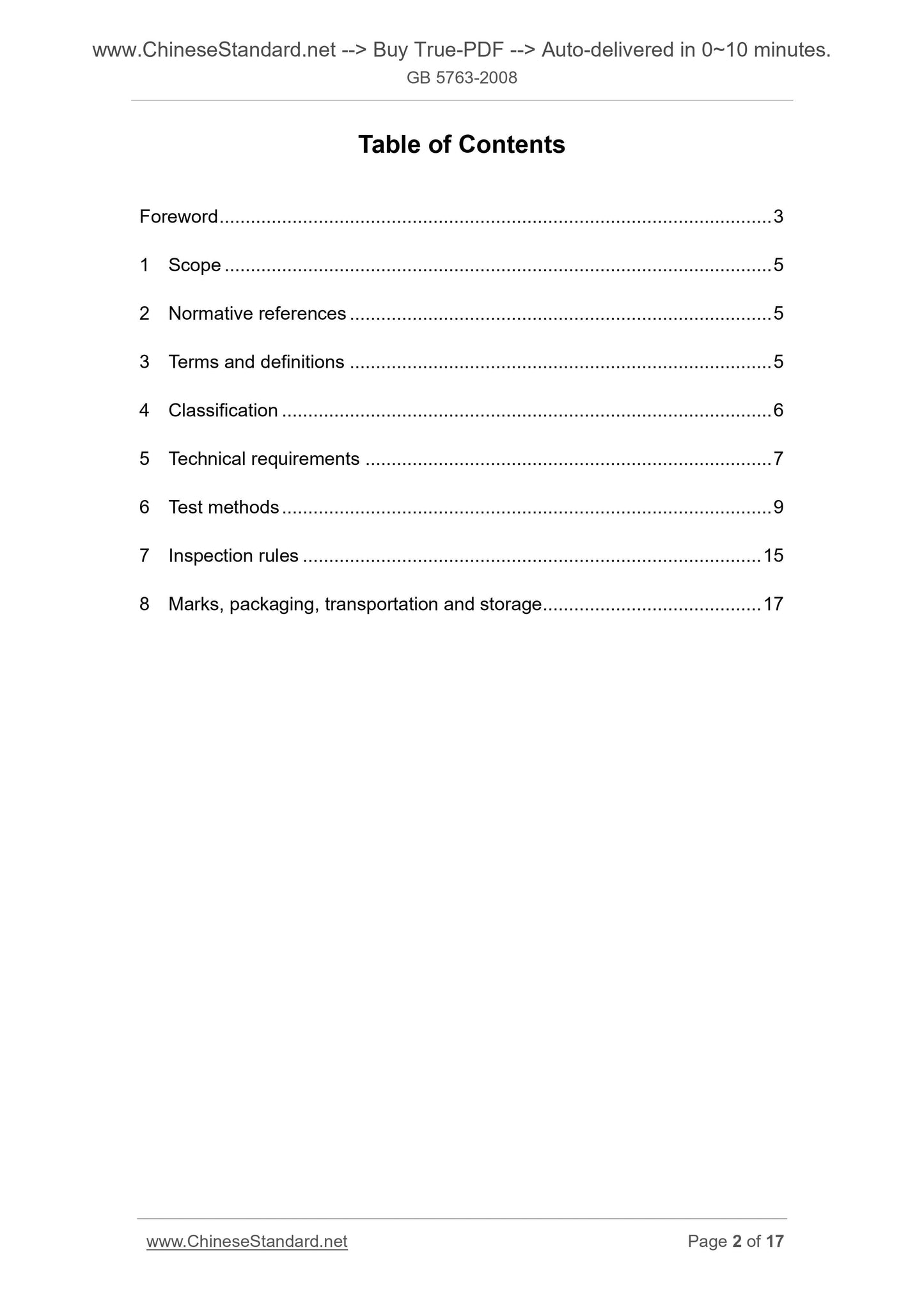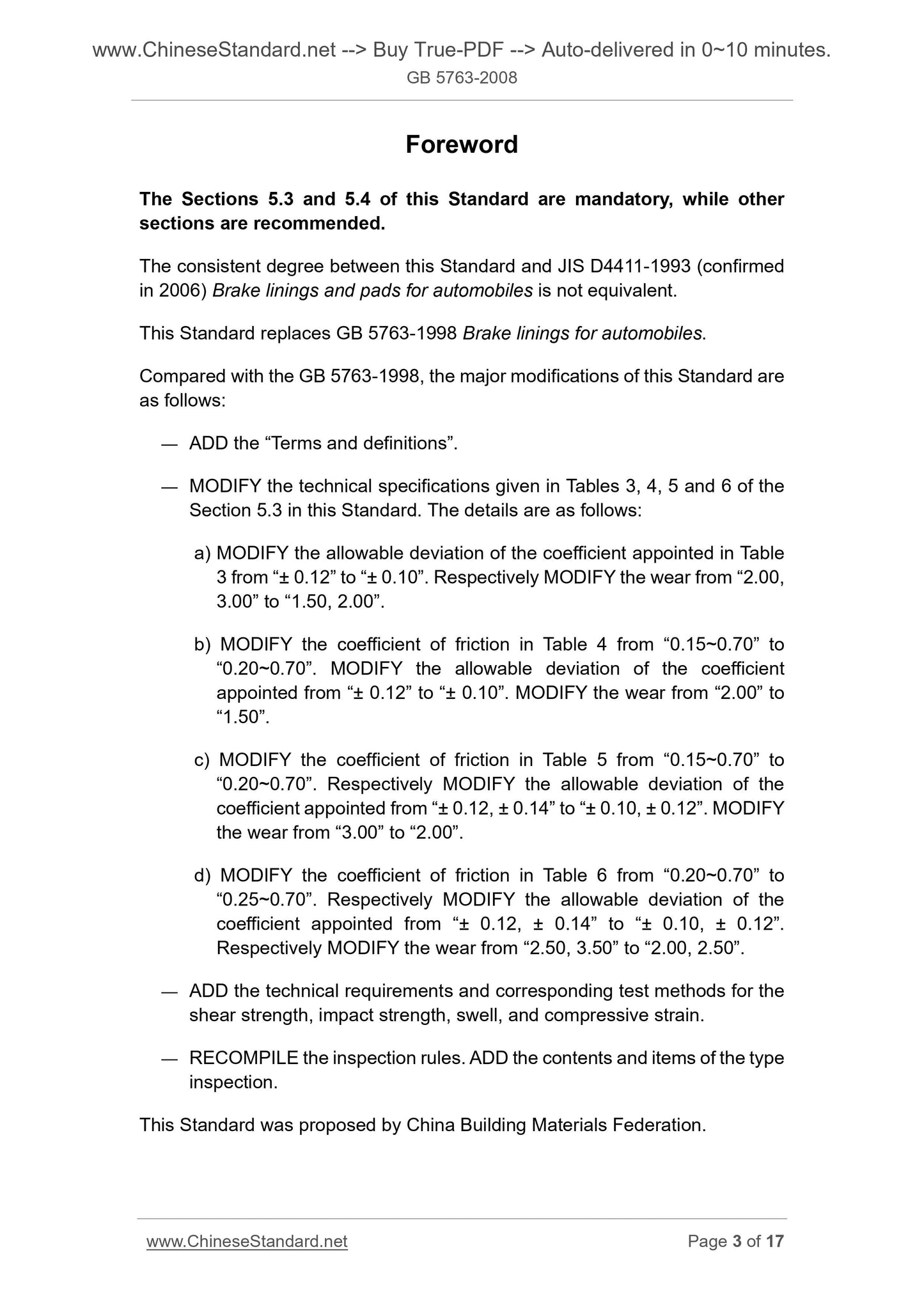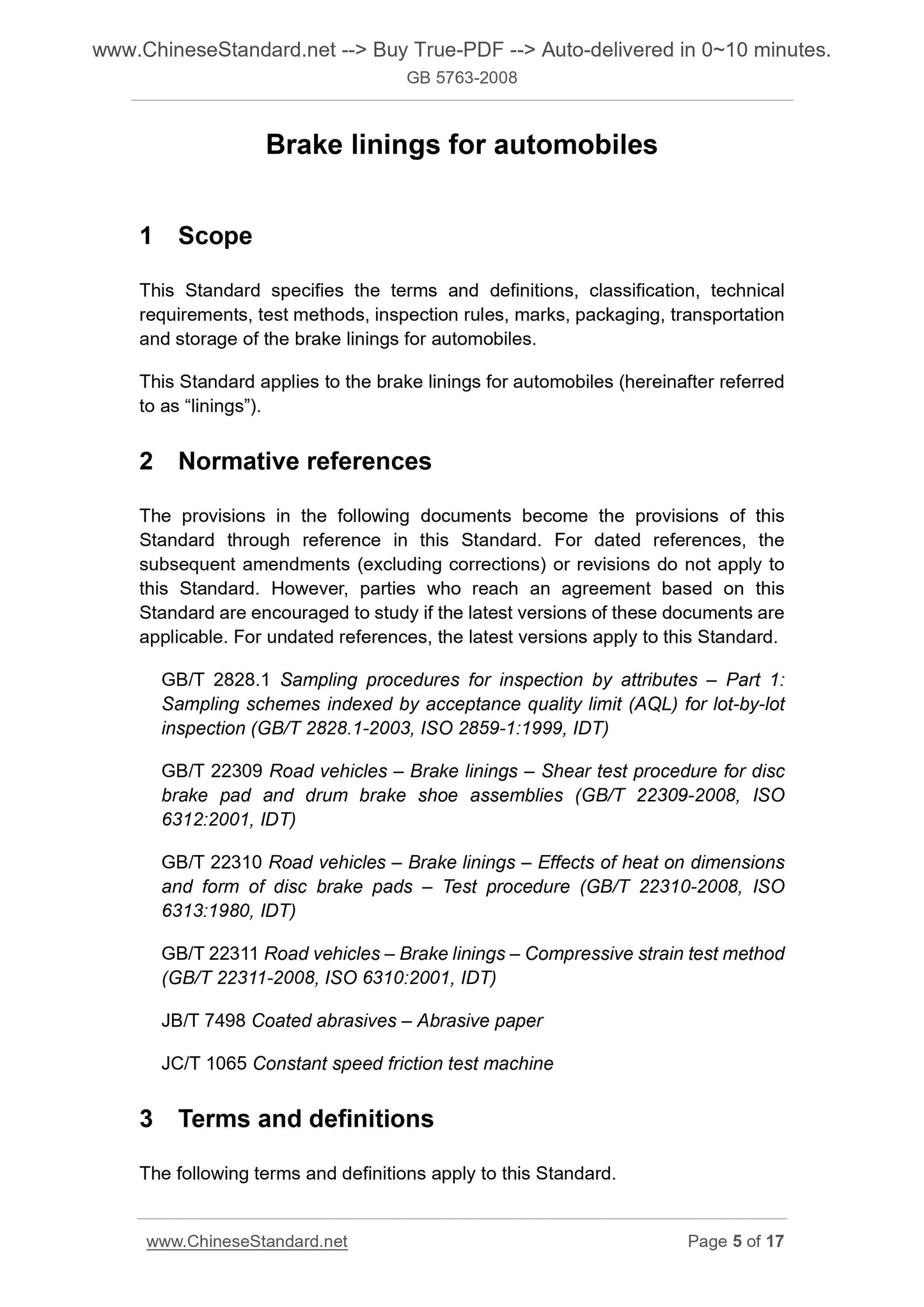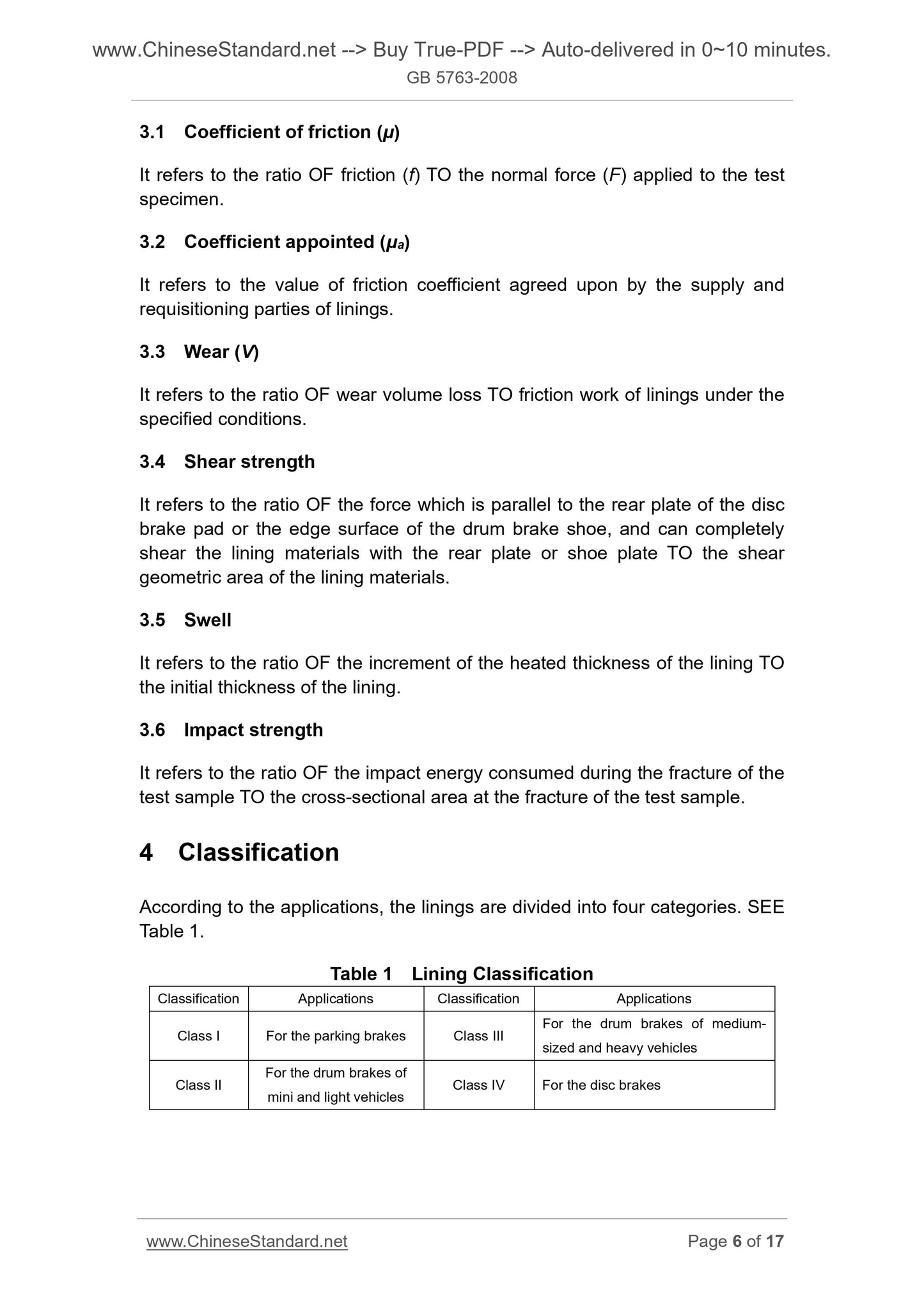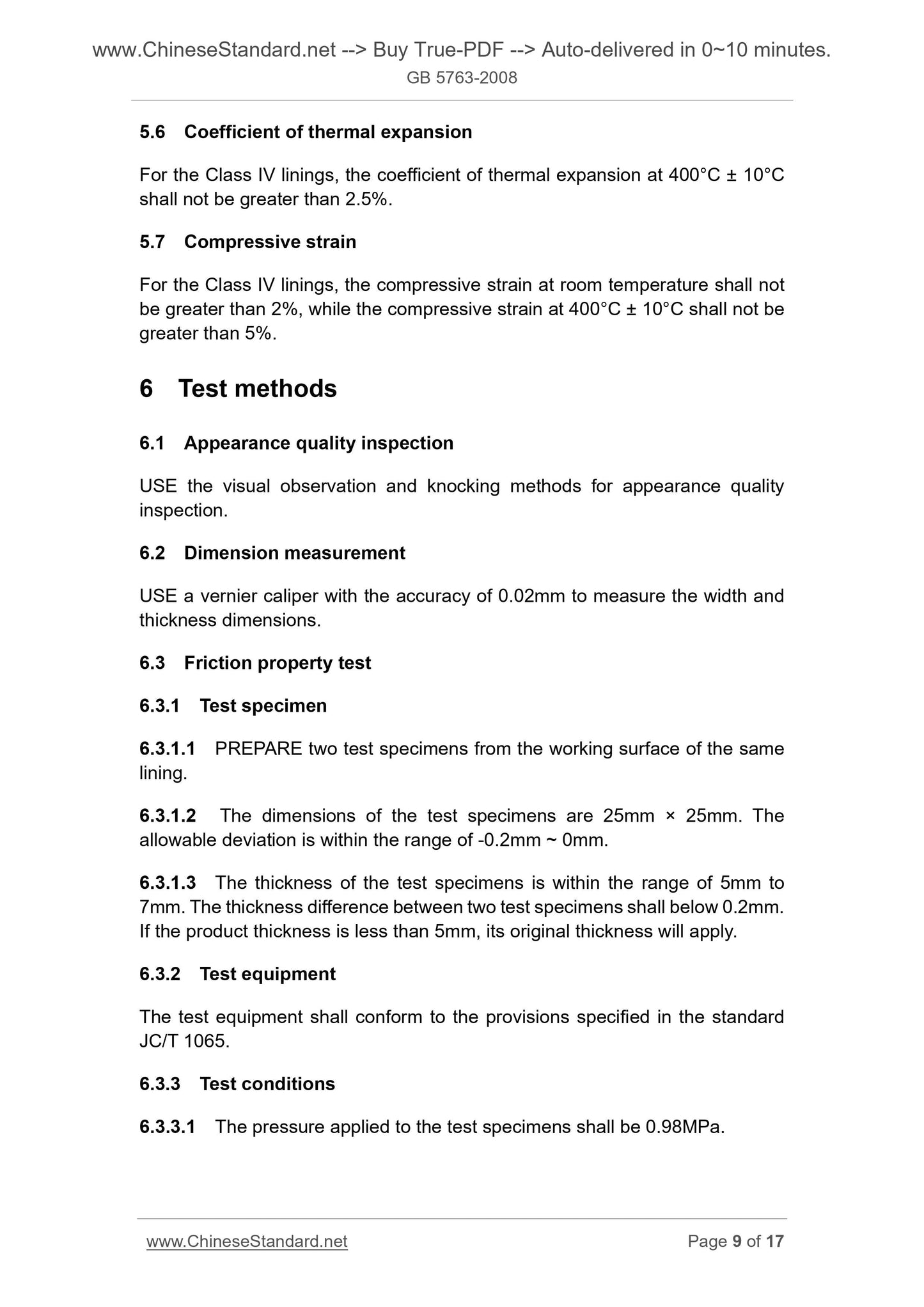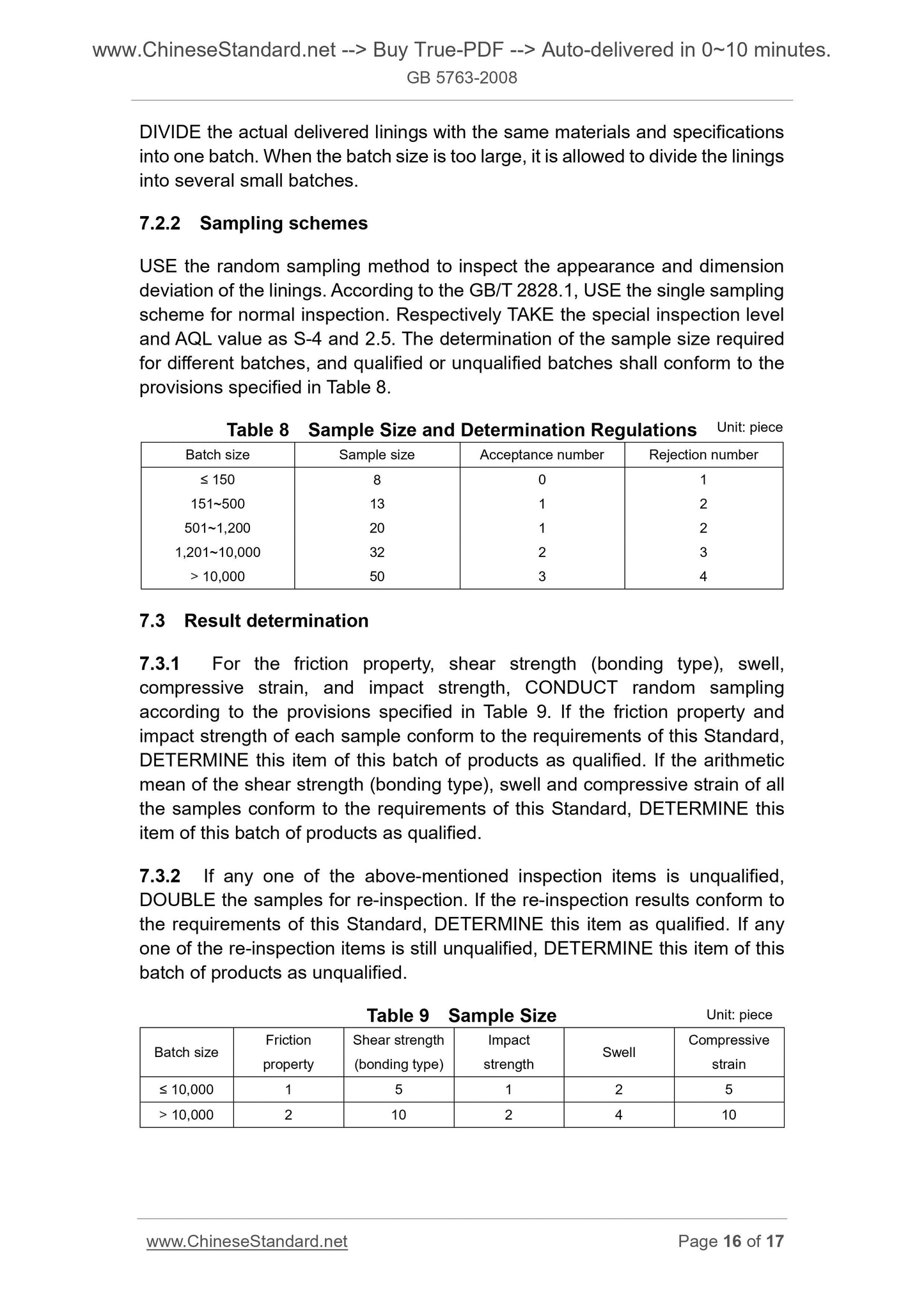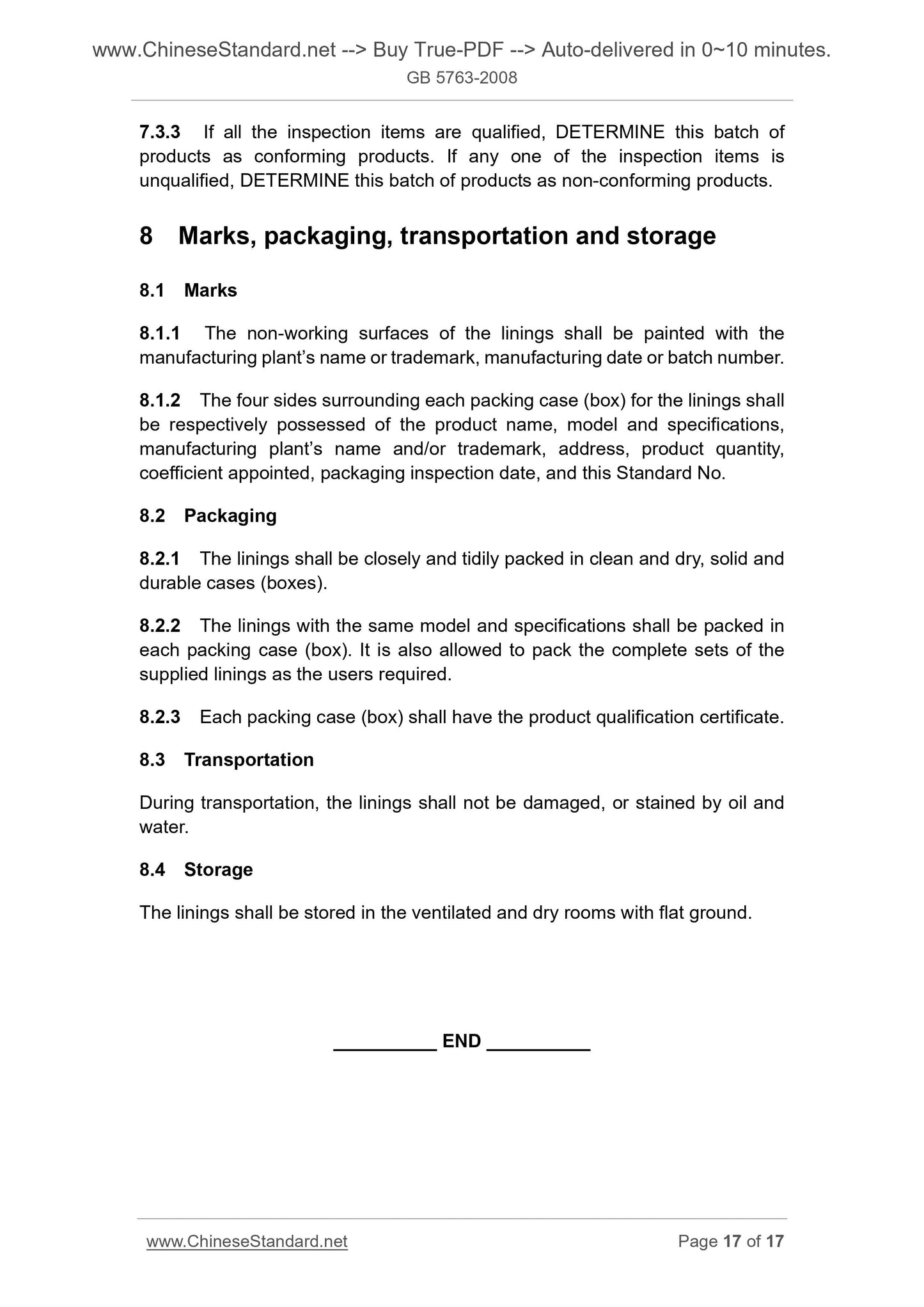1
/
of
9
PayPal, credit cards. Download editable-PDF & invoice in 1 second!
GB 5763-2008 English PDF
GB 5763-2008 English PDF
Regular price
$85.00
Regular price
Sale price
$85.00
Unit price
/
per
Shipping calculated at checkout.
Couldn't load pickup availability
GB 5763-2008: Brake linings for automobiles
Delivery: 9 seconds. Download (and Email) true-PDF + Invoice.Get Quotation: Click GB 5763-2008 (Self-service in 1-minute)
Newer / historical versions: GB 5763-2008
Preview True-PDF
Scope
This Standard specifies the terms and definitions, classification, technicalrequirements, test methods, inspection rules, marks, packaging, transportation
and storage of the brake linings for automobiles.
This Standard applies to the brake linings for automobiles (hereinafter referred
to as “linings”).
Basic Data
| Standard ID | GB 5763-2008 (GB5763-2008) |
| Description (Translated English) | Brake linings for automobiles |
| Sector / Industry | National Standard |
| Classification of Chinese Standard | Q69 |
| Classification of International Standard | 43.040.40 |
| Word Count Estimation | 11,121 |
| Date of Issue | 2008-09-18 |
| Date of Implementation | 2009-09-10 |
| Older Standard (superseded by this standard) | GB 5763-1998 |
| Quoted Standard | GB/T 2828.1; GB/T 22309; GB/T 22310; GB/T 22311; JB/T 7498; JC/T 1065 |
| Adopted Standard | JIS D4411-1993 (2006), NEQ |
| Regulation (derived from) | Announcement of Newly Approved National Standards No. 16 of 2008 (No. 129 overall) |
| Issuing agency(ies) | General Administration of Quality Supervision, Inspection and Quarantine of the People's Republic of China, Standardization Administration of the People's Republic of China |
| Summary | This Chinese standard specifies the automobile brake linings terms and definitions, classification, technical requirements, test methods, inspection rules, marking, packaging, transportation and storage and so on. This standard applies to automobile brake linings (hereinafter referred to as linings). |
Share
